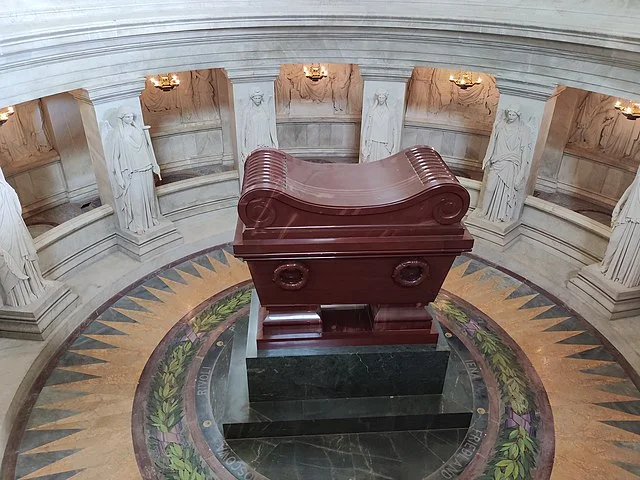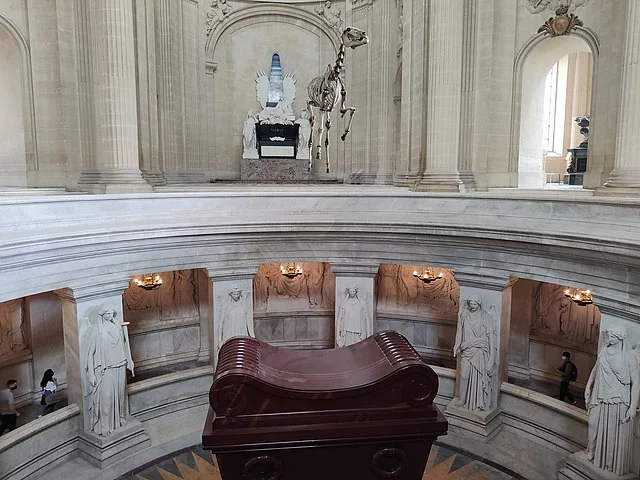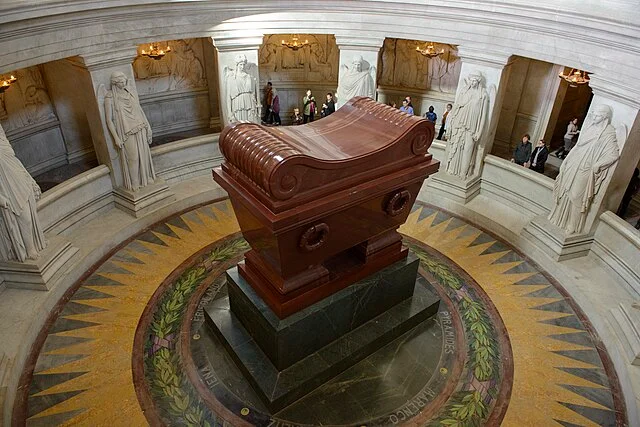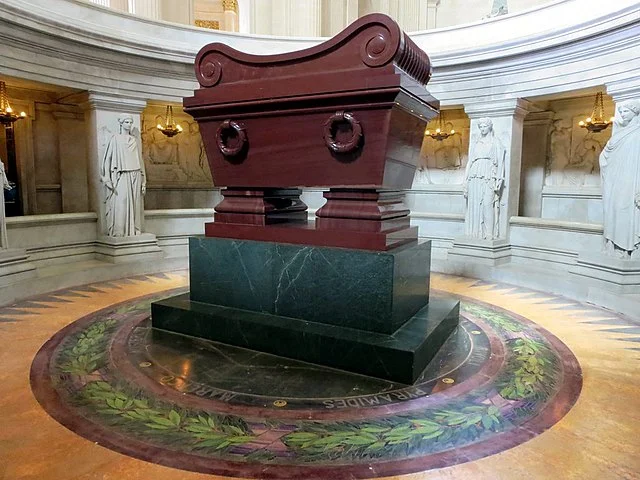Napoleon Bonaparte, one of history’s most significant military and political leaders, was entombed in Paris, France. His tomb is located at the Dôme des Invalides, a grand structure built originally for French soldiers. Today, it is best known for housing Napoleon’s remains.
Get your dose of History via Email
History of Napoleon’s Tomb

Napoleon died in exile on the island of Saint Helena on May 5, 1821. Initially, his body was buried there in a simple grave. However, in 1840, his remains were returned to France in what became known as the Retour des Cendres or “Return of the Ashes.” King Louis-Philippe of France ordered the transfer, and on December 15, 1840, a grand ceremony was held to welcome Napoleon’s remains back to Paris.
Following this, his remains were placed at Les Invalides. The Dôme des Invalides, originally completed in 1706, was later transformed into Napoleon’s final resting place. Architect Louis Visconti was tasked with designing a suitable tomb for the emperor.
Design and Architecture of the Tomb

Napoleon’s tomb is a massive structure, reflecting the grandeur of his legacy. Visconti used red quartzite to construct the tomb. It sits beneath the dome in the main hall of Les Invalides. Visitors can view the tomb from above, where the red stone contrasts with the white marble floor. The space around the tomb is decorated with sculptures, including 12 massive victory statues. These statues symbolize Napoleon’s military victories.
Inside the tomb, Napoleon’s body rests within several coffins, each one nested inside the other. The outermost coffin is made of red quartzite, but the inner coffins include materials like tin, mahogany, and lead. This layered construction ensured the long-term preservation of his remains.
Significance of the Tomb

Napoleon’s tomb is not just a resting place; it serves as a symbol of his enduring influence on France and the world. His remains were moved to France to give him the honor he did not receive after his death in exile. The tomb’s location at Les Invalides emphasizes his connection to the French military, which he led to numerous victories during his reign as emperor.
Today, the tomb attracts visitors from around the globe. It remains one of the most famous sites in Paris, where people can reflect on the life and legacy of one of history’s most powerful figures.
Conclusion
The tomb of Napoleon Bonaparte represents much more than a final resting place. It is a monument to his military and political legacy. From his humble grave on Saint Helena to the magnificent tomb in Paris, Napoleon’s journey reflects his enduring place in history. The design and grandeur of his tomb at Les Invalides stand as a testament to the lasting impact he had on France and the world.
Source:

